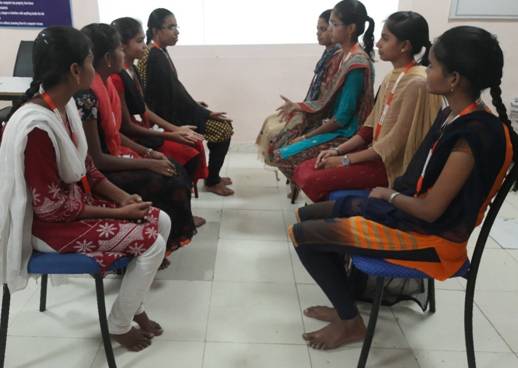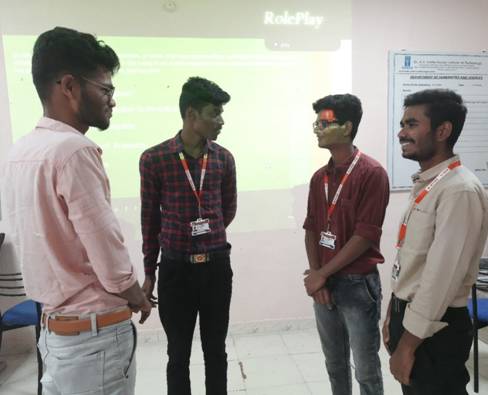

Best Practice:1
3. Context
Equity in education can be defined as building on the conceptual framework and ensures that all students reach at least a basic minimum level of skills. It allows individuals to take full advantage of education and training irrespective of their background. There is evidence that students background has an impact on their academic achievement. The purpose of education is to develop girl and boy with sound knowledge and awareness. Skills and values to live we a whole some life. Dr. K.V. Subba Reddy Institute of Technology (Dr. KVSRIT) reflects this purpose in its Vision and Mission that is to provide quality education for Empowerment and Enlightenment in an Endeavour to provide value-based education to the future teachers. Another step in this direction could be the identification of strengths and weaknesses in the teaching and learning processes as carried out by the institution. Diversity of learners in respect of their background, abilities and other personal attributes will influence the extent of their learning. It took months of research and practice to understand.
The definition of “WIT & WIL” method explained as an active methodology of teaching and learning activity with “Why am I Teaching & What I am Teaching” from Teacher’s perspective. And from student’s perspective “Why is I Learning & What I am learning”. Dr. K.V. Subba Reddy Institute of Engineering & Technology. Education is the backbone of a society’s growth and development. It was with this background that the Society was formed with the objective of promoting excellence in education in the state of Andhra Pradesh. Today, Dr. KVSRIT has created an edifice with unshakable foundations which can only grow higher and higher.
Dr. K.V. Subba Reddy Institute of Technology was established in the year of 2007. The Institute attempts to integrate class room learning with related industrial experience into a single educational process. One of the important goals of the Institute is to provide integrated knowledge of theory and practice to the student by creating opportunities to work on projects as well as summer internship in Industries.
During the first year, special stress is laid on development of manual skills,work culture, communication skills and courses on general education and introduction to Engineering. The Institute designed a Mentoring-Training-Placement (MTP) system implemented and monitored from the day of admission till the day the student leaves the Institute to make him/her a complete knowledgeable and useful citizen.
The implementation process is structured in a framework. The format is prepared in the form of lecture plan and gave it to the concern faculty to fix their contents of the syllabus into the format. This document is purely transparent to the students. The feedbacks are collected at the end of each class in the form of slip note, quiz, student presentation, etc.
4. The Practice
Pedagogical initiatives in poor achieving of student academic excellence in teaching–learning students conducts research, understand educational policies, and develop the skills required to meet the needs of all. Students who have poor academic performance may need a little extra assistance in getting through exams. For that, teachers create opportunities where students receive continuous and specific feedback which helps to improve. Students believe that the goal of the teacher is to develop their minds as powerful thinkers and problem – solvers. The view of education as a profession in which practice and theory interact dynamically to guide curriculum, pedagogy and educational. Every individual’s learning depends on his/her context. Reflecting on experiences lead to more responsible action. Evaluation of learning leads to further refinement of the teaching learning process.
Academic excellence provides:
Interaction with students:
5. Evidence of Success
The benefits of opting for pedagogical teaching learning:
6. Problems encountered and resources required
Resources required

Debate by the students
The Students of I B.Tech ECE are participated in the debate on the topic of “Advantages and Disadvantages of Mobile Phones”.

Oral Presentation by the students
The Students of I B.Tech EEE are participated in the Oral Presentation on the topic of “5G Wireless Technology”.

Role Play by the students
The Students of I B.Tech Civil are participated in the Role Play on the topic of “Ace the Interview”.

Group Discussion by the students
The Students of I B.Tech CSE are participated in the Group Discussion on the topic of “Private Job vs Government Job”.